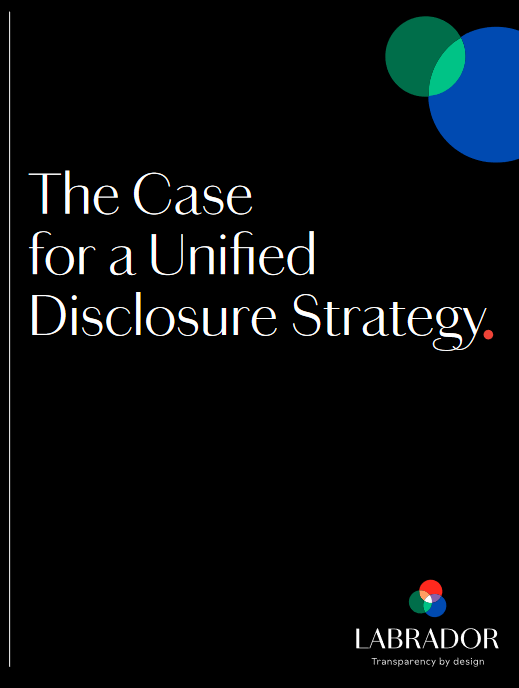In honor of the SEC (likely) adopting a final climate disclosure rule today, let’s talk about ESG reports. Compared to even the recent past, many companies find they have more resources than ever before when they tackle drafting the proxy. As more and more annual meetings have ballot items that garner close voting results, the proxy is increasingly viewed as a document that should be drafted with the reader in mind. Hence, the proxy is treated today more like the glossy annual report has long been.
The growing importance of the proxy means that it has a bigger budget. Perhaps there’s a greater headcount within the company that is involved in the drafting process. Perhaps more assistance from law firms is sought. Or proxy disclosure specialists are brought in to assist. Like Labrador. That’s the good news.
The bad news is that the process for drafting ESG reports is one is still in the muck. It’s a new report for many companies and so a lot of companies don’t have the proper resources to tackle this drafting process. Not yet at least.
It’s understandable since it’s all so new. The disclosure controls aren’t there. The necessary data can be hard to find and might not be reliable. And the structure, the organization, for the process has to be built from scratch. You need to figure out which digital tools you need. You need to figure out how can you create an audit trail. You need to build relationships – both inside the company and outside – so that people are willing to do the work to gather the data that is required. It’s a real mess at some companies.
At the outset for many companies tackling their first ESG report, they just don’t have a handle on how difficult it can be to draft a good report. At this early stage, some companies haven’t devoted the proper resources to the ESG reporting process. Senior management might think this process is as easy as drafting the SEC filings that have many years of precedent and historical structure to draw from. But it’s not the same.
And when building out an ESG reporting process, many mistakes inevitably are made. Team leaders with limited experience, either with ESG reporting specifically or with the drafting process in general. Disclosure review processes that don’t take into account the complexities of ESG disclosure compared to the proxy. Or the opposite type of problem, too many cooks in the kitchen.
Then there is the patchwork problem. Since drafting an ESG report is a team sport, various sections are drafted by different departments within the company. When a report is stitched together like that, it’s difficult to maintain a flow from beginning to end. There needs to be someone doing a final review that can try to bring the sections into alignment in the end. And of course, ensure that the disclosure is consistent and saying the same thing throughout. This takes planning.
Maybe planning isn’t the forte of the person leading the charge. That leader might not have the project management experience that the job requires – or a natural talent for that kind of thing. There’s a lot of moving pieces, managing people both inside the company and outside. It’s a real challenge to get everyone on the same page and ensure that tasks are being completed competently and on time.
Timing is always an issue too. More and more companies are moving up when they issue their ESG reports, trying to get them more closely aligned with the timing of the proxy ahead of the annual shareholders meeting. That’s compressing the time that companies have to prepare and too many times they underestimate how much time they need. You always need to start earlier than you think.
Adding to the confusion might be a lack of uniformity among companies about what is disclosed and how to implement disclosure controls in this area. It will take a while until this process matures. You should be asking yourself, “Are our processes evolving towards producing auditable disclosure?” Until then, there will continue to be many unfortunate growing pains…


























